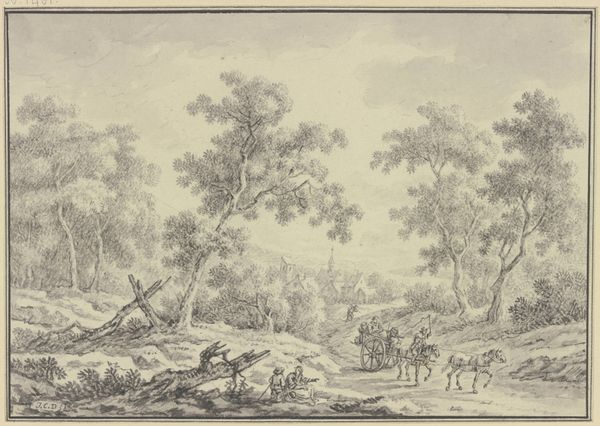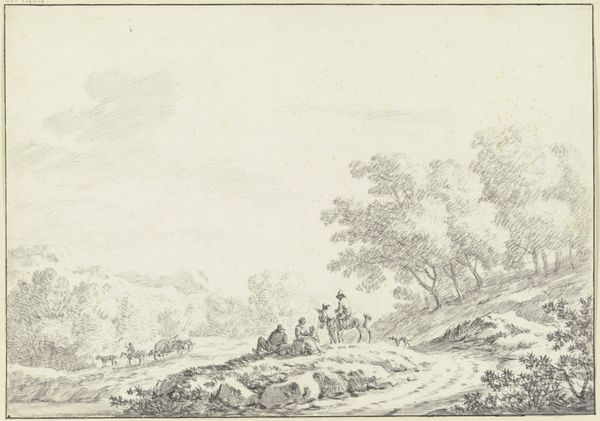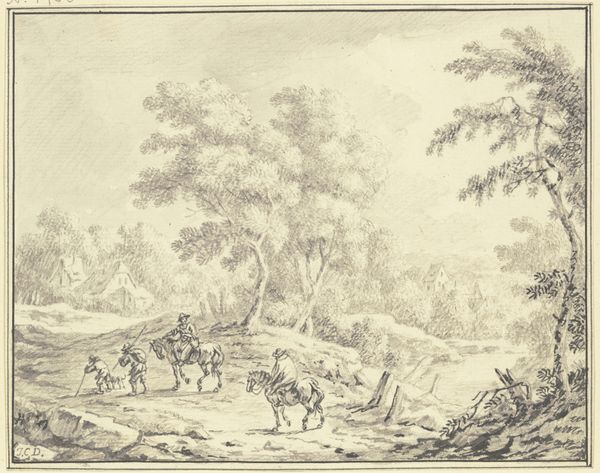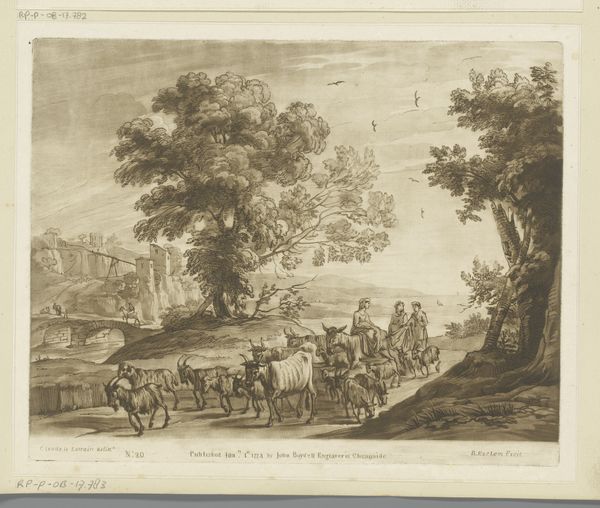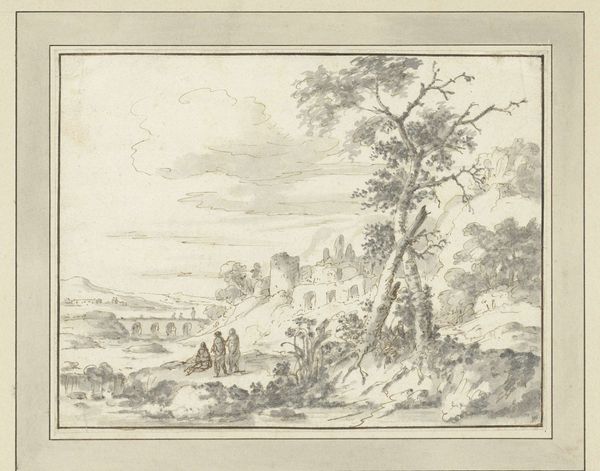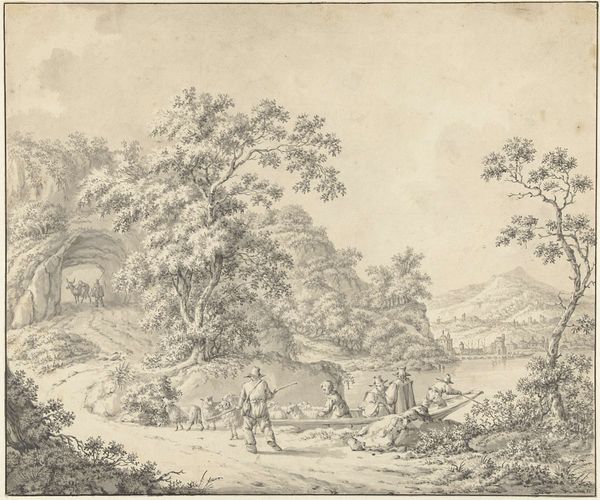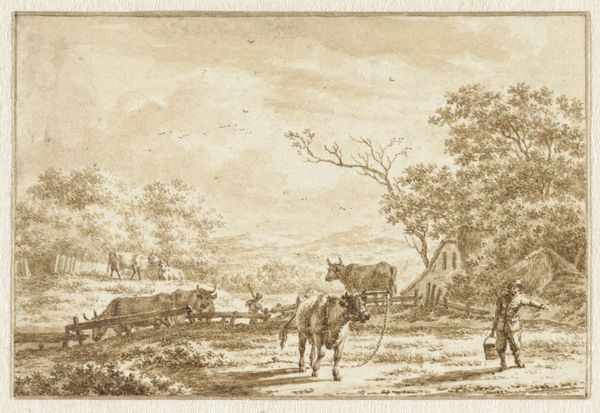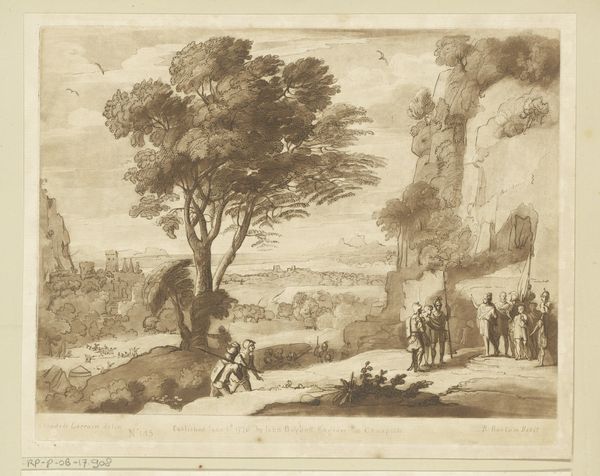
#
landscape illustration sketch
#
toned paper
#
light pencil work
#
quirky sketch
#
pencil sketch
#
personal sketchbook
#
pen-ink sketch
#
sketchbook drawing
#
watercolour illustration
#
sketchbook art
Dimensions: height 112 mm, width 148 mm
Copyright: Rijks Museum: Open Domain
Curator: This drawing, called "Reiskoets," dates back to 1653, and it’s credited to Evert Rijnvisch. Editor: Immediately, I notice the sepia tones and delicate line work; it lends the scene an almost dreamlike, nostalgic quality. Is it pen and ink? Curator: Yes, it's rendered with incredible detail using pen and ink. Rijnvisch masterfully uses light and shadow to create depth in the landscape. I find the etching particularly fascinating for the insight it gives us into 17th-century travel and society. Editor: And that's where I struggle a bit. While the pastoral scene is charming, and that coach is just asking to be examined through the lens of wealth and privilege, who did it serve and how did it benefit from these idyllic portrayals? I wonder about access... Who really got to move about like this? Curator: That's a fair point. Visually, that central image of the coach—bearing the year '1653' — functions almost like a heraldic emblem. It speaks to the importance of travel for trade and social mobility, and reminds the modern viewer of a slower and perhaps more deliberate connection with the land. Travel itself possessed symbolic power, even religious connotations, which makes me ponder who commissioned it. Editor: It probably reflects less the reality of common life than the idealized self-image of a particular class. The labourers along the road feature more as background, part of the charming rural backdrop. Also, this almost monochrome rendering seems symbolic to me—like viewing the past through an unchanging lens, though historical truths are so diverse and far from simple. Curator: You highlight a crucial aspect of landscapes—they reflect cultural attitudes and ideologies. I keep seeing here that the seemingly casual placement of that old coach with '1653', imprints a lasting vision upon the landscape and history overall. I feel how such imagery plays an important role in cultural continuity and memory-making. Editor: Exactly. A cultural snapshot selectively framed to emphasize certain aspects of life while obscuring others. Seeing through these choices makes art like this continuously meaningful to consider. Curator: Thinking about our conversation, I see the power an artist wields—the lasting power to influence perceptions, and shape future visions based on even a humble drawing. Editor: Yes, the persistent after-image of what might feel simple and bucolic still encourages our own social awareness. That’s why returning to old artwork can be so provocative.
Comments
No comments
Be the first to comment and join the conversation on the ultimate creative platform.


